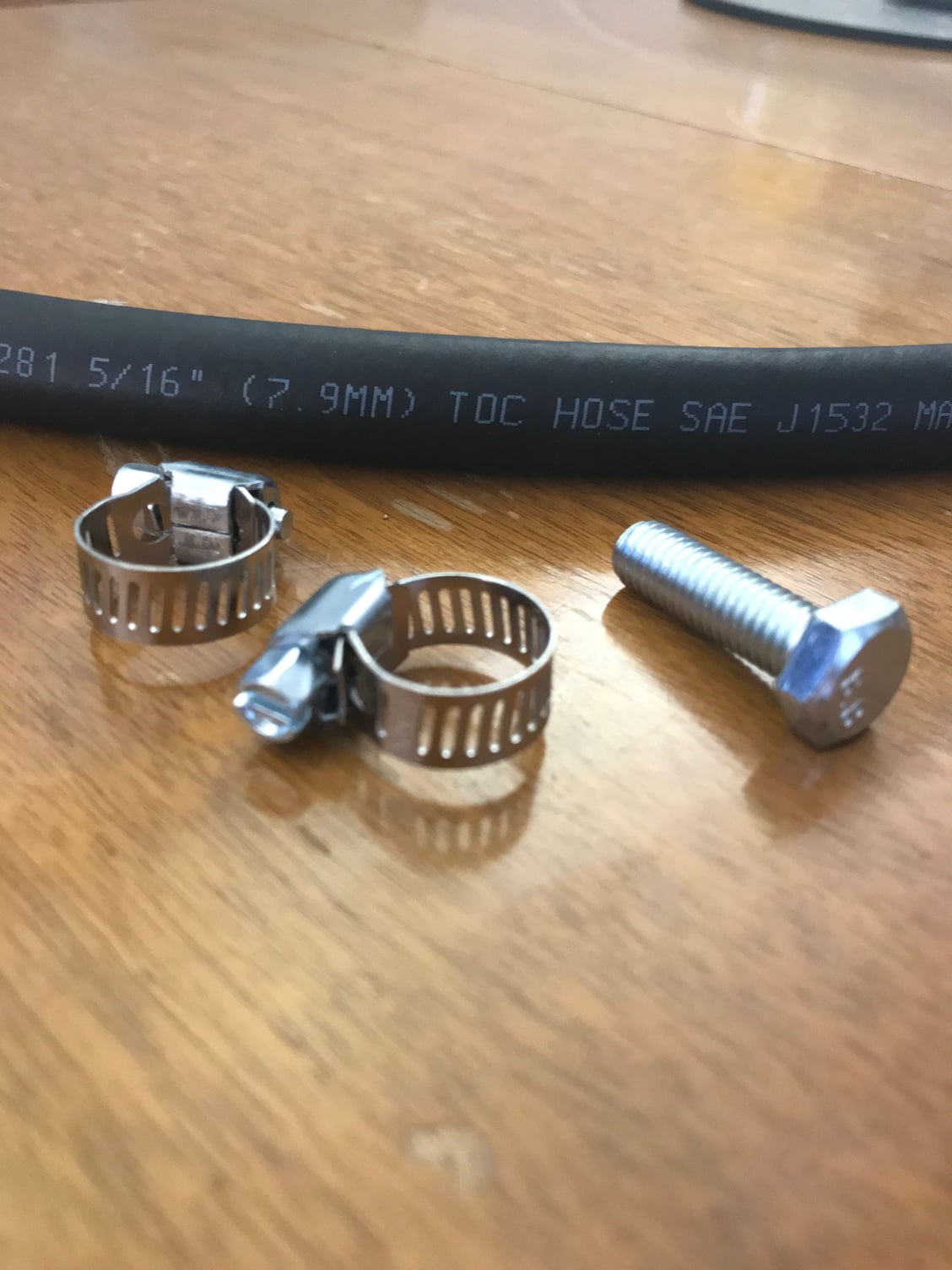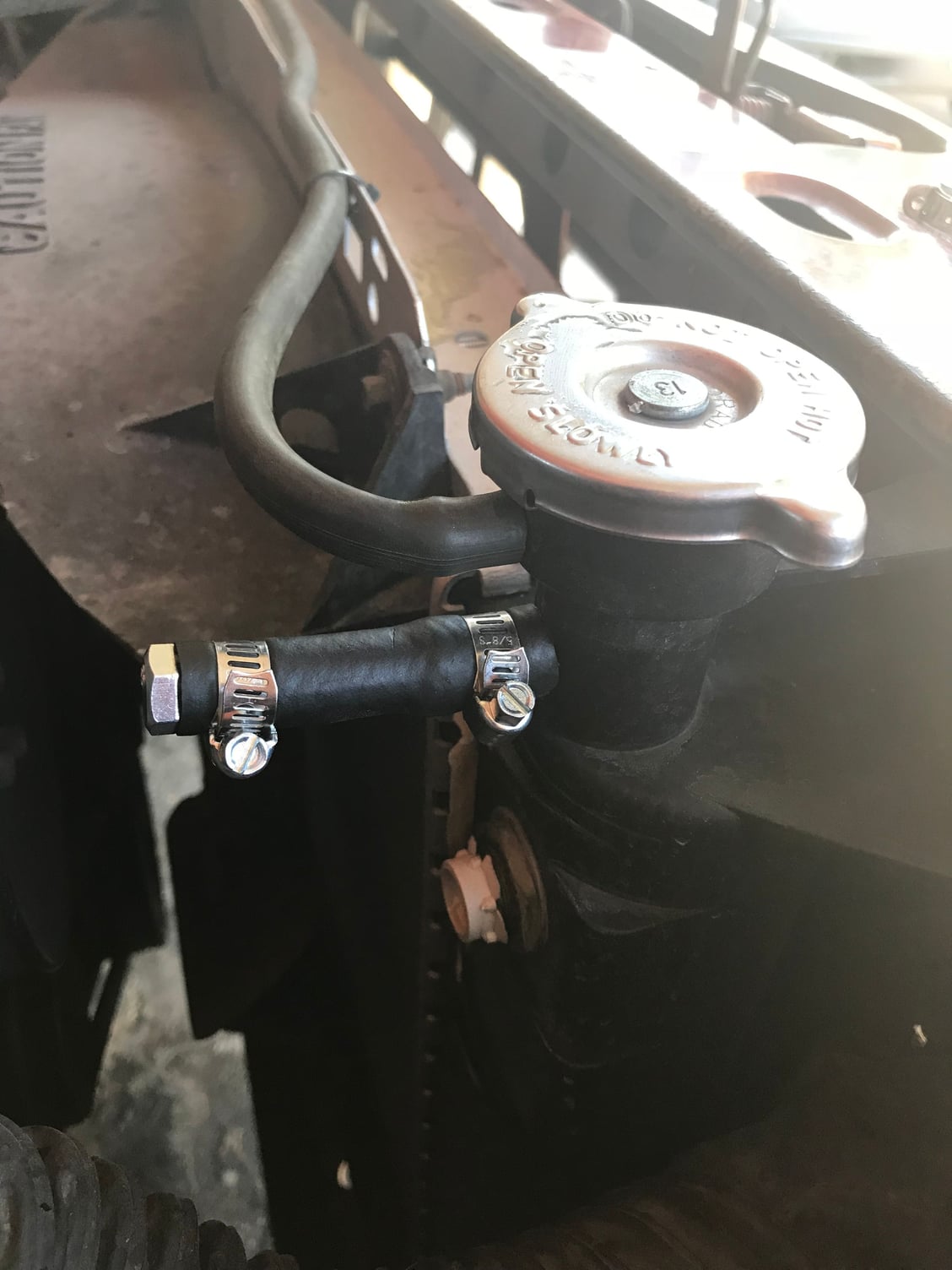Random radiator question
#16
#17
#18
I think the hose from the tee to the top of the radiator tank is the hot pressure side. That water is leaving the block hot and headed to the heater core or by the tee back to the radiator. Perhaps it's there as a pressure balancer between the heater core and the radiator? I don't think there is much flow through there unless the heater core gets plugged.
#19
I think the hose from the tee to the top of the radiator tank is the hot pressure side. That water is leaving the block hot and headed to the heater core or by the tee back to the radiator. Perhaps it's there as a pressure balancer between the heater core and the radiator? I don't think there is much flow through there unless the heater core gets plugged.
All that hose is for is a degas by pass. Or it can be used as the suction side for the throttle body anti ice which also degases the system. That is why this connection is always under the rad cap it will allow the system to burp any air in to the overflow bottle. The cap sees the same pressure as the rad cap.
Napa sells replacement caps.
https://www.napaonline.com/en/search?text=Bypass%2Bcaps&referer=search_form-allprod
#20
#21
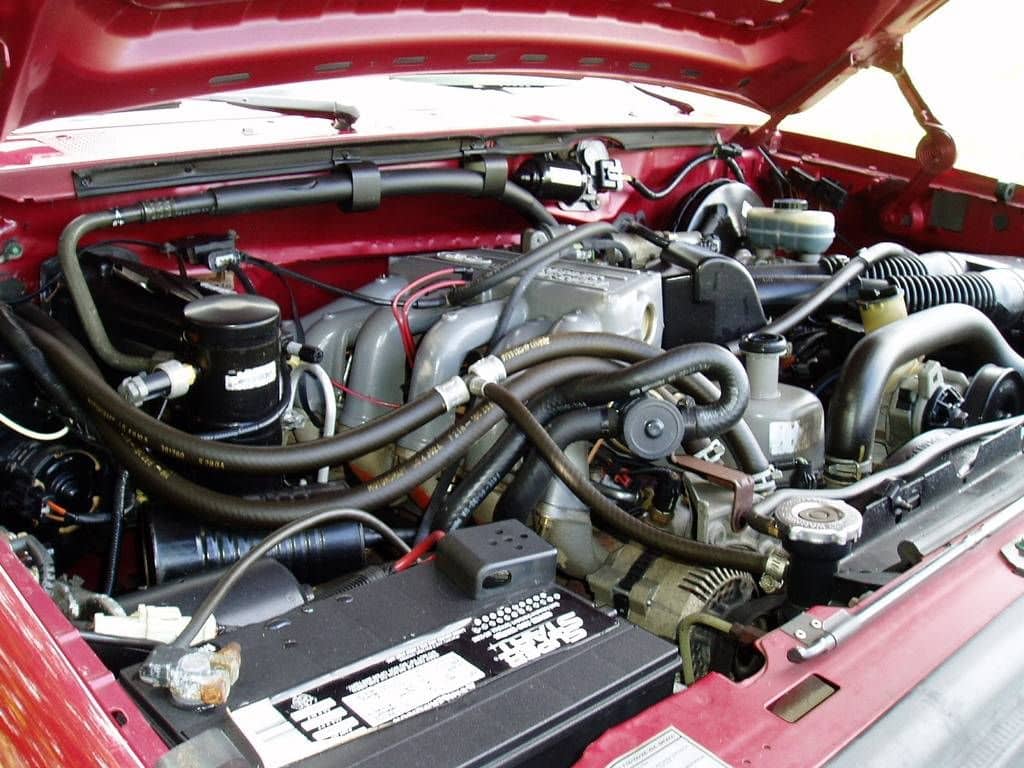
I was talking about this setup and Franklin mentioned this setup would bypass the thermostat...but it's already out of the block so won't affect the warm up time. I think you might be right as well about it also being used for a degas on some models. I've never had a degas bottle on one of my rigs and with any luck will be able to avoid it in the future. I'm sticking with Big Blue till the end of time!
Big Blue 2
#22

I was talking about this setup and Franklin mentioned this setup would bypass the thermostat...but it's already out of the block so won't affect the warm up time. I think you might be right as well about it also being used for a degas on some models. I've never had a degas bottle on one of my rigs and with any luck will be able to avoid it in the future. I'm sticking with Big Blue till the end of time!
Big Blue 2
I understand it will promote the air in the block to be directed to the top of the radiator, but none of the older setups used this. I was just wondering what in this design caused this hose to be added? Once you do get the air out of the engine, you should not need to keep burping it on a continuous basis do you?
#23
Yes, it is coming out of the block. Normally it would go through the heater core and back into the block to recirculate through the block again. That hose will let the water go through the cold radiator, bypassing the thermostat, pushing cold water from the radiator down into the waterpump to be pumped into the engine. I am talking about during engine warm-up, when the thermostat is closed.
I understand it will promote the air in the block to be directed to the top of the radiator, but none of the older setups used this. I was just wondering what in this design caused this hose to be added? Once you do get the air out of the engine, you should not need to keep burping it on a continuous basis do you?
I understand it will promote the air in the block to be directed to the top of the radiator, but none of the older setups used this. I was just wondering what in this design caused this hose to be added? Once you do get the air out of the engine, you should not need to keep burping it on a continuous basis do you?
There is a bypass already on the engine, all liquid cooled engines no matter make or model if they are equipped with a thermostat have a bypass.
The above is strictly for degassing and nothing else.
The 300's bypass is internal there is a port on the water pump that bypasses the thermostat through a passage in the block in to the head, See below circled.
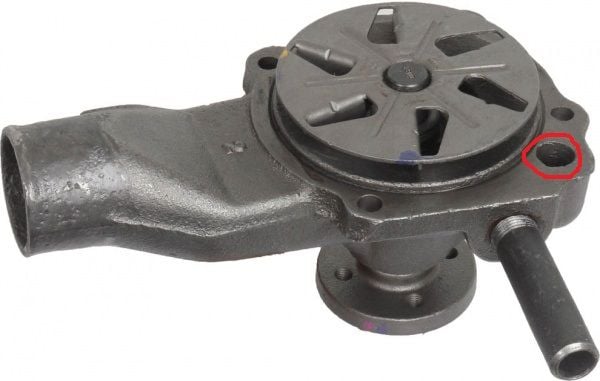
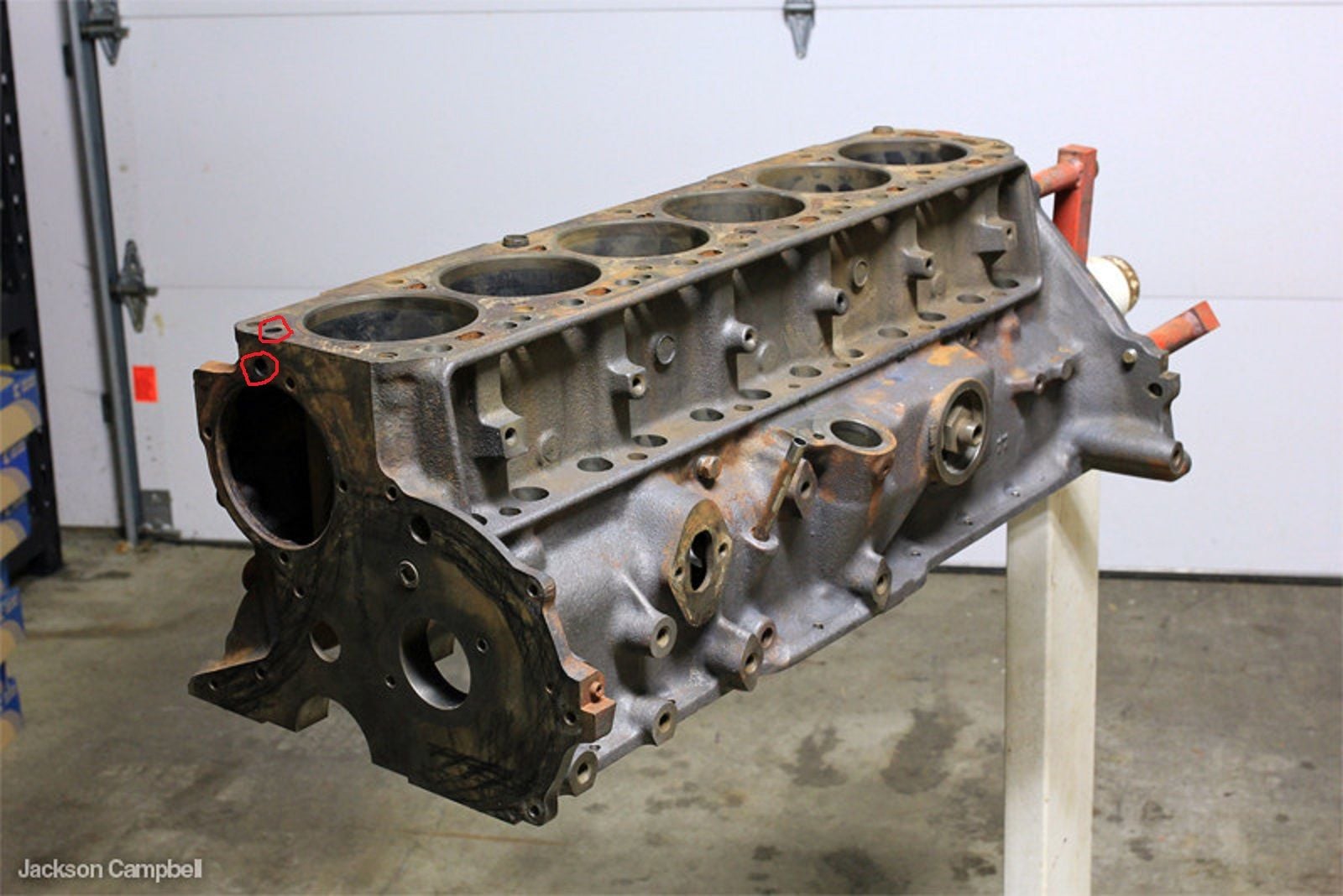
#24
I didn't say it was "for" bypassing the thermostat, I am saying it looks to me like it is bypassing the thermostat. It looks to me like that hose going to the heater core has waterpump pressure on it correct? So what would keep some of that water from going into the radiator? If that water goes into the radiator, then that water will be replaced by water from the bottom of the radiator correct?
In other words, if you look in the picture, the hose with the tee fitting in it comes off the top of the waterpump, right beside the large hose that goes to the top of the radiator. So they have the same source of coolant, the output of the waterpump. Coolant can't get through the large hose to the top of the radiator because the thermostat is shut. But it looks to me like it can certainly go down the smaller hose,, through the tee fitting, and into the top of the radiator.
I am looking for an answer like"yea, they put that hose on there so when the thermostat opened it would not be such a shock to the system and mess up the computer sensors" or some sort of reason like that.
In other words, if you look in the picture, the hose with the tee fitting in it comes off the top of the waterpump, right beside the large hose that goes to the top of the radiator. So they have the same source of coolant, the output of the waterpump. Coolant can't get through the large hose to the top of the radiator because the thermostat is shut. But it looks to me like it can certainly go down the smaller hose,, through the tee fitting, and into the top of the radiator.
I am looking for an answer like"yea, they put that hose on there so when the thermostat opened it would not be such a shock to the system and mess up the computer sensors" or some sort of reason like that.
#25
That's a great question, Franklin. I would like to know the answer to that myself.
Since that port is located right above the automatic transmission fluid cooler, could it be used to help warm the transmission fluid for better operation in colder temperatures? That port was added to the radiator right around the time Ford started using computer-controlled automatic transmissions.
Since that port is located right above the automatic transmission fluid cooler, could it be used to help warm the transmission fluid for better operation in colder temperatures? That port was added to the radiator right around the time Ford started using computer-controlled automatic transmissions.
#26
I didn't say it was "for" bypassing the thermostat, I am saying it looks to me like it is bypassing the thermostat. It looks to me like that hose going to the heater core has waterpump pressure on it correct? So what would keep some of that water from going into the radiator? If that water goes into the radiator, then that water will be replaced by water from the bottom of the radiator correct?
In other words, if you look in the picture, the hose with the tee fitting in it comes off the top of the waterpump, right beside the large hose that goes to the top of the radiator. So they have the same source of coolant, the output of the waterpump. Coolant can't get through the large hose to the top of the radiator because the thermostat is shut. But it looks to me like it can certainly go down the smaller hose,, through the tee fitting, and into the top of the radiator.
I am looking for an answer like"yea, they put that hose on there so when the thermostat opened it would not be such a shock to the system and mess up the computer sensors" or some sort of reason like that.
In other words, if you look in the picture, the hose with the tee fitting in it comes off the top of the waterpump, right beside the large hose that goes to the top of the radiator. So they have the same source of coolant, the output of the waterpump. Coolant can't get through the large hose to the top of the radiator because the thermostat is shut. But it looks to me like it can certainly go down the smaller hose,, through the tee fitting, and into the top of the radiator.
I am looking for an answer like"yea, they put that hose on there so when the thermostat opened it would not be such a shock to the system and mess up the computer sensors" or some sort of reason like that.
That hose from the heater line to the rad is on the cold side of the rad or the suction side (low pressure) side of the water pump. The cold side of the rad is the suction side of the cooling system not only does the rad restrict coolant flow reducing pressure but the reduction in coolant temp on the cold side of the rad also reduces pressure. If you measured the cooling system pressure on the hot and cold side of the rad there would be a pressure differential.
The hose is fed off the pressure side of the water pump for heater core heater heat. This allows for any air in engine block to be burped from one of the higher points in the cooling system into the rad and helps prevents heater core and engine cooling system air lock and ensures that the engine is full of coolant with minimal to no air pockets may create hot spots leading it can also lead to higher emissions primarily NOX.
There is no shock to the system when T-stat opens, as there is already a bypass in the engine block that insures the coolant in the block heats as evenly as possible, that is the whole point of the engine by pass in the first place.
These hoses that are tapped in to the heater lines and go to the rad are for degassing, and may double up as a throttle body anti ice mechanism the Europeans have been using this setup since the 60's for degassing the coolant system. Even EU Ford with carbs and manuals used degassing bypass lines in the 70's.
As for trans heat the trans will heat up before the engine coolant does on a cold engine on a cold day.
This by pass hose is just for degassing that is all.
#27
I didn't say it was "for" bypassing the thermostat, I am saying it looks to me like it is bypassing the thermostat. It looks to me like that hose going to the heater core has waterpump pressure on it correct? So what would keep some of that water from going into the radiator? If that water goes into the radiator, then that water will be replaced by water from the bottom of the radiator correct?
In other words, if you look in the picture, the hose with the tee fitting in it comes off the top of the waterpump, right beside the large hose that goes to the top of the radiator. So they have the same source of coolant, the output of the waterpump. Coolant can't get through the large hose to the top of the radiator because the thermostat is shut. But it looks to me like it can certainly go down the smaller hose,, through the tee fitting, and into the top of the radiator.
I am looking for an answer like"yea, they put that hose on there so when the thermostat opened it would not be such a shock to the system and mess up the computer sensors" or some sort of reason like that.
In other words, if you look in the picture, the hose with the tee fitting in it comes off the top of the waterpump, right beside the large hose that goes to the top of the radiator. So they have the same source of coolant, the output of the waterpump. Coolant can't get through the large hose to the top of the radiator because the thermostat is shut. But it looks to me like it can certainly go down the smaller hose,, through the tee fitting, and into the top of the radiator.
I am looking for an answer like"yea, they put that hose on there so when the thermostat opened it would not be such a shock to the system and mess up the computer sensors" or some sort of reason like that.
Big Blue 2
#28
I see what you are saying about the tee line might be adding warm up time but I think the flow through that teed line is so minimal that it wouldn't have much effect. When the thermostat is closed the flow is lower over all. There'd be little difference between going through a cold heater core or a cold radiator before returning to the block. Even when the thermostat opens up I can't see much flow in the teed line. Whether the thermostat is open or closed the little line is competing with the big hose for space in the top of the radiator. To be a good air bubble removing device it's going to need some flow to sweep out the air. Air is going to accumulate in high points. If there isn't much flow in a hose it's not going to be able to sweep air bubbles out. I'm truly clueless what the teed line is for. I've never had one like that. The degas bottle is another element that I'm wondering about how I've gotten by for so long without one as well. I think that the filler cap on the radiator is usually the high point of most cooling systems. Air should accumulate in the filler neck and when pressures build in the cooling system it's the first thing to be burped out through the pressure cap to the overfill bottle.
Big Blue 2
Big Blue 2
In some cars the rad cap is the high point but not so in pickup trucks the heater core is high point and many of the heater hoses are higher especially with the later serpentine system. Air is thinner than coolant and remember it is plumbed to the low pressure side of the rad/suction side of the water pump. The air in the degas line easy is sucked into the rad due to the lower pressure that is then burped in to the overflow bottle the overflow connection in this setup is always above the degas connection.
Thread
Thread Starter
Forum
Replies
Last Post
BKSinAZ
2004 - 2008 F150
1
11-02-2014 03:25 PM
AndeyHall
6.0L Power Stroke Diesel
14
12-22-2010 06:58 PM
JoeF150
1980 - 1986 Bullnose F100, F150 & Larger F-Series Trucks
4
10-30-2002 01:15 AM
MickeyP
1983 - 2012 Ranger & B-Series
4
07-08-2002 07:05 PM



